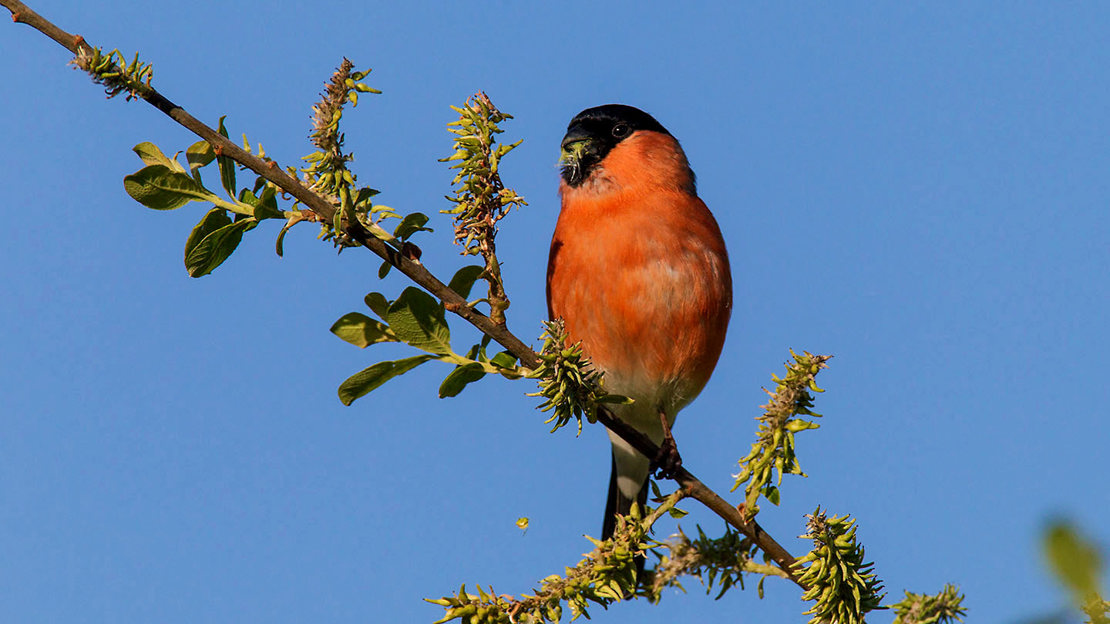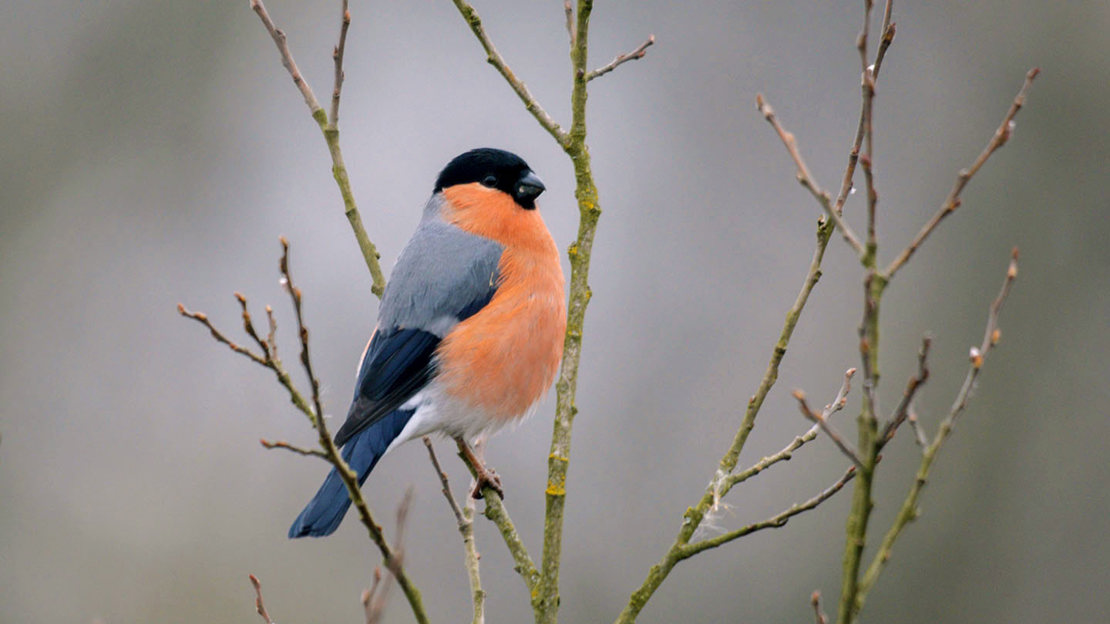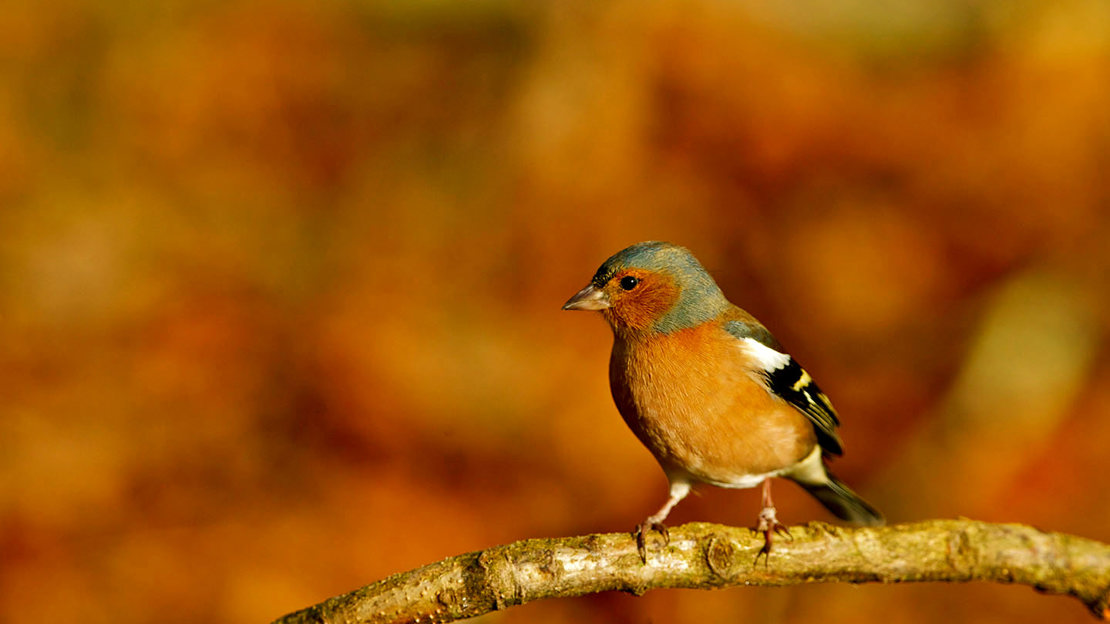Bullfinch numbers dropped by roughly 40% between 1970 and 2015. An increase has occurred in recent years thankfully, but the species remains of conservation concern.
How to attract bullfinches to your garden

Content editor
Few UK birds are more striking than the bullfinch. With its vibrant pink breast and white rump, the male is among our most colourful birds. Despite their bold appearance, bullfinches are shy and often wary of humans. But they can still be attracted to gardens. Here are some tips for encouraging these beautiful birds to visit your patch.
What do bullfinches eat?
The natural diet of bullfinches is dominated by tree buds, shoots and flowers in spring, with seeds becoming more important in summer to winter. Invertebrates are also caught as food for growing chicks.
Bullfinches will sometimes visit bird feeders containing seeds, so be sure to offer these to increase your chances of a visit. If you have space, why not plant a fruiting tree? This way you’ll be providing a natural food source and helping a host of other wildlife too.

How and when do bullfinches nest?
It’s unusual for bullfinches to nest in gardens. As a shy species they prefer to build their nest in thick cover and rarely use nest boxes. But if your garden has areas of dense vegetation and is close to woodland, there is a chance bullfinches could use it as a nesting site.
Bullfinches tend to lay their eggs between May and July. They will often raise two broods of young and even three in a good year. Four to five eggs are normally laid, hatching after around two weeks. The chicks will stay in the nest for a similar amount of time before fledging.
How to identify bullfinches
If you’re not sure if bullfinches are already visiting your garden, here are a few identification tips:
Colour: male bullfinches have a bright pink-red breast and cheeks, a black cap and grey wings. Females have a duller grey-pink breast. Both sexes have a white rump that is visible in flight.
Beak: bullfinches have a short, powerful-looking beak.
Size: bullfinches are relatively stocky for small birds and are a little larger than a robin.
Similar species: you may confuse bullfinches with chaffinches. Male chaffinches also have a brightly coloured breast, but lack the bullfinch’s black cap and have a generally less powerful appearance.
According to research from the British Trust for Ornithology, bullfinches are only found in around 10% of UK gardens, so don’t be disheartened if they don’t visit yours immediately. By providing food, shelter and suitable habitat you’ll attract several other bird species and perhaps one day a bullfinch will be among them. If you’re really keen to see a bullfinch, look for them along woodland edges and in hedgerows.
Attract birds to your garden
Buy feeders, nest boxes and more from our online shop.
Visit the shop now


